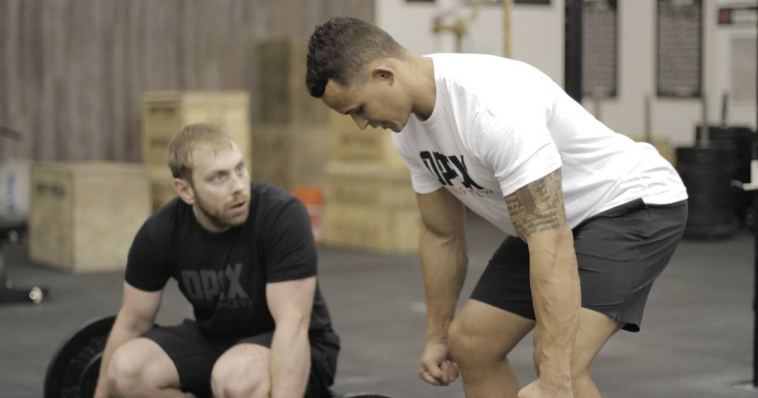- Like
- SHARE
- Digg
- Del
- Tumblr
- VKontakte
- Flattr
- Buffer
- Love This
- Save
- Odnoklassniki
- Meneame
- Blogger
- Amazon
- Yahoo Mail
- Gmail
- AOL
- Newsvine
- HackerNews
- Evernote
- MySpace
- Mail.ru
- Viadeo
- Line
- Comments
- Yummly
- SMS
- Viber
- Telegram
- JOIN
- Skype
- Facebook Messenger
- Kakao
- LiveJournal
- Yammer
- Edgar
- Fintel
- Mix
- Instapaper
- Copy Link
There’s a reason functional bodybuilding (FBB) has become an overactive buzzing buzzword in the fitness industry today: It combines traditional strength training with a more, let’s call it, practical way to train, one that gets you moving better—moving more functionally. This goes a long way in improving health and fitness long-term.
Learning Functional Bodybuilding
Functional bodybuilding, which focuses more on quality of movement than intensity, allows us to bring bodybuilding principles to functional resistance training.
This helps build a great foundation of strength and efficient movement, one that is designed to accommodate each individual’s abilities and goals in a way that’s supportive for health and longevity.
Hence, it’s useful not just for high level athletes, but also for people just wanting to be healthy and functional for life, but who aren’t interested in being bodybuilders.
A Functional Bodybuilding Primer
I mentioned the importance of understanding the principles of bodybuilding and energy system training. Let’s talk about these principles, starting with traditional bodybuilders.
Bodybuilders are known for their ability to increase muscle mass (aka hypertrophy). This isn’t just about lifting heavy weights, it’s also about understanding how to manipulate repetitions, sets, tempo and rest time, as well as mastering concepts like time under tension—meaning the amount of time a muscle, or muscles, are under tension during any given set.
For hypertrophy to occur, the optimum time under tension is in the neighborhood of 40 seconds.
While that might sound simple enough—5 squat reps @3311 = 40 seconds of time under tension. Easy peazy—it’s not quite THAT simple.
It’s also incredibly important to consider the person’s abilities and their training age, meaning how long they have been training. This is why if you’re a coach, or if you’re a client looking for a program or a coach, an individualized assessment with a coach is key to the process. You may want to try the systematic approach assessment guide for coaches.
That being said, here are four key principles to keep in mind if you’re about to start, or build a FBB program for a client:
- Compound movements first: Compound exercises, like a squat or a bench press, should be done at the start of a training session, while isolation exercises, like a bicep curl or a leg extension, should be done later in the training session.
- Keep track of contractions per muscle group in any given session: Ideally, the number of exercises per body part should be between two and four per session. If not, technique and recovery is likely to suffer.
- Keep in mind intended contraction: This comes down to knowing what movements are appropriate for you (or if you’re a coach, knowing your clients’ abilities and limitations). Don’t be fooled by sexy movements. If they’re out of your ability, they’re not going to help you.
- Quality over intensity: It’s as simple as that. This doesn’t mean there can’t be intensity. It simply has to be appropriate intensity given the skill and strength level of the individual. Simplicity over complexity. Quality over intensity.
Energy System Training
One of the ideas behind FBB is to provide strength training without hurting aerobic capacity. This largely comes down to understanding energy system training, meaning the anaerobic alactic, anaerobic lactic, and aerobic systems.
Two important, and often overlooked, concepts to understand include:
- Get the rest time right: The most important part of rest and recovery time comes down to the individual and what they are capable of recovery from. This is true to both rest time during interval training and recovery from one session to the next.
- Avoid interference: If you’re doing (or programming) aerobic work, consider the types of movements you (or your client) is going on their resistance/FBB training the next day. For example, if they’re doing a ton of hinging the next day, then maybe avoid high-volume rowing intervals on their energy system training day, as it’s a similar movement pattern. As a general rule, keep these movement patterns separated by at least a day.
Key takeaway: Whether you’re someone wanting to begin a functional bodybuilding program, or a coach looking to design one, the most important takeaway is that there’s no one-size fits all approach to a program.
For best effectiveness, a great functional bodybuilding program needs to consider the individual’s capabilities, priorities, training age and goals. This concept is at the heart of OPEX education, and the foundation of their new functional bodybuilding guide.
Choosing the Right Functional Bodybuilding Program
Take one scour of the old internet and you’ll find countless functional bodybuilding—or FBB—programs for sale. And like most products and services, they’re not all created equal.
Take one scour of the old internet and you’ll find countless functional bodybuilding—or FBB—programs for sale. And like most products and services, they’re not all created equal.
I believe a great functional bodybuilding program will get you results and requires understanding the key principles of not just bodybuilding, but also of energy system training.
Check out OPEX’s free How to Program Functional Bodybuilding Workouts introductory ebook.



